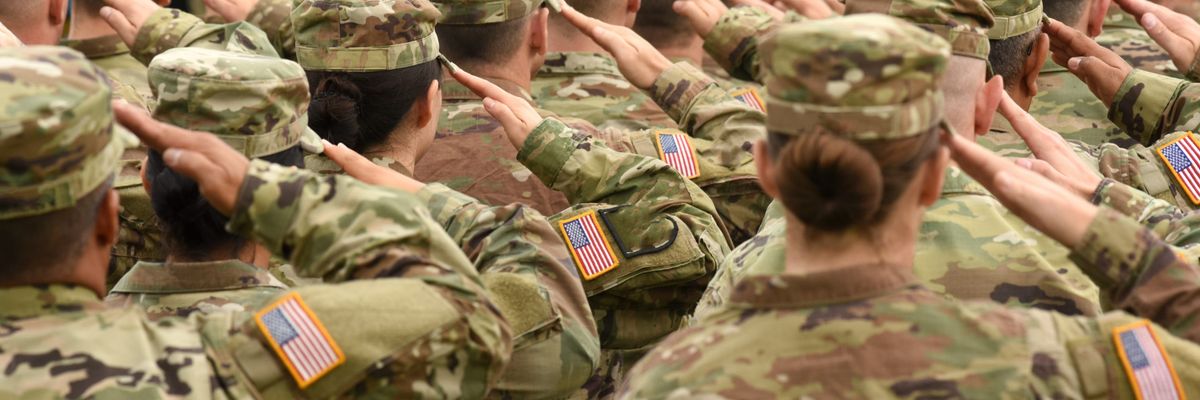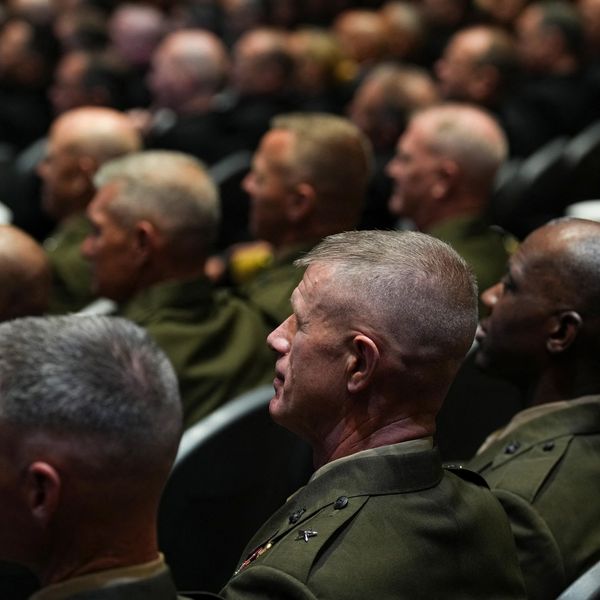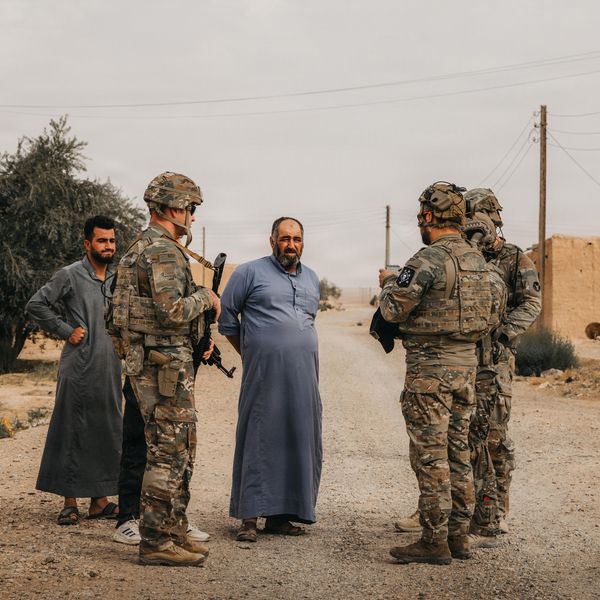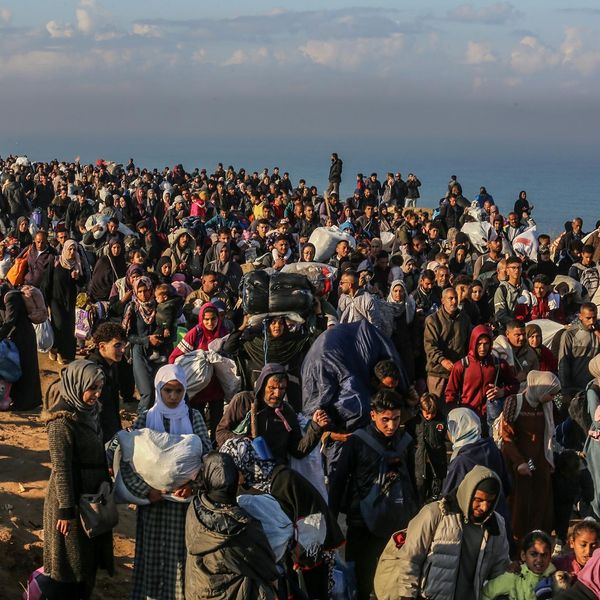The disturbing results of a survey released this week by the Ronald Reagan Foundation and Institute show that 88 percent of Americans fear that “political polarization will lead to violence” and 61 percent of them “report that threats emanating from within are equal to or greater” than threats from abroad.
Americans are scared and don’t know where to turn. In just over two years, ending in February 2021, according to the Foundation (a stalwart supporter of the military) the number of Americans who say they have a “great deal of confidence” in the military — for decades the most trusted institution according to polls — has plummeted, from 70 to 56 percent. Americans’ confidence in the military is “down among all subgroups,” the Foundation reported — down 11 percent among Democrats and 19 percent among Republicans. Remarkably, confidence in the military among its own veterans is down 15 percent and down 18 percent among active-service military households.
There’s reason for great concern. Americans’ confidence in the other institutions in the survey, including the president, Supreme Court, public schools, media, and Congress) increased or declined by only a point or two over two years, except for the final institution in the survey. Americans’ confidence in police and law enforcement, closely intertwined with the military, declined from 50 to 39 percent.
A 2020 Gallup poll shows similarly startling results over only one year. The number of Americans expressing a “great deal” of confidence in the military and police declined from 45 to 40 percent and 29 to 23 percent, respectively.
These are the only two institutions authorized and trained to use force regularly, and Americans might have been surprised, given the results of the polls, by how quickly state-authorized violence can be implemented and normalized. On June 1, 2020, amid the turbulence following the death of George Floyd, the Secretary of Defense, Mark Esper, a former Army officer, and the chairman of the Joint Chiefs of Staff, Army General Mark Milley, strode with President Trump through Lafayette Park, in Washington, as law enforcement agents used chemical gas to clear the park of peaceful protesters. Esper, on a call with Trump prior to their walk in the park, spoke to state governors as a defense secretary would direct a general in war. “I think the sooner that you mass and dominate the battlespace, the quicker this dissipates and we can get back to the right normal.”
Something is indeed abnormal. Even when the chairman of the Joint Chiefs is not deployed in his combat uniform in a public park, the problems associated with a standing army, perhaps the Founder’s greatest fear, areis not limited to thean army itself. Coincidently this week, Derek Chauvin, the former Minneapolis police officer who was most closely connected to the death of George Floyd went on trial, charged with murder.
Chauvin, like many in law enforcement, is a military veteran. One analysis, by the Marshall Project, found that all 50 states and the federal government give preferences to military veterans when hiring for law enforcement positions. But the veterans appear more likely than non-veterans to be the recipients of citizen complaints, including for excessive-use-of-force.
Novelist Phil Klay, a former Marine officer, wrote in 2016, “In Iraq, I knew so many Marines with plans of joining their local police force back home it was almost comical.” In fact, professors Gregory B. Lewis and Rahul Pathak found that 19 percent of U.S. police officers are military veterans. Klay noted that an ex-soldier, a veteran of the war in Afghanistan who killed five police officers on July 7, 2016, in Dallas, Texas, “followed standard [military] tactics for a close ambush, which are ‘to establish fire superiority and assault through the objective.’”
Veterans employed in law enforcement appear more likely than non-veterans to fire their guns at people, according to one study by researchers at the University of Texas. The researchers found that, in a sample of 516 Dallas police officers, the cops who had been deployed on military duty were 2.9 times and the nondeployed cops were 1.94 times more likely to have fired their guns compared with officers who had not been in the military. “Close to one-third of officers involved in a shooting had a military background,” according to the Marshall Project, which sponsored the study.
The most serious violence in society appears disproportionately to have origins inside the military, or in some of the people who are attracted to it, according to anthropology professor Hugh Gusterson. He wrote in 2016 that “the facts speak for themselves. Veterans account for 13 percent of the adult population, but more than a third of the adult perpetrators of the 43 worst mass killings since 1984 had been in the United States military. It is clear that, in the etiology of mass killings, military service is an important risk factor.”
The danger, as the American respondents in the polls apparently recognized, is, indeed, from within. In a 2015 study, researchers found that while “veterans exhibit significantly higher suicide risk compared with the U.S. general population” (41 to 61 percent higher), deployment to the wars in Afghanistan and Iraq, alone, “was not associated with the excess suicide risk.”
If external wars are not causing the harm, then something else must be. High levels of sexual violence continue within the military, despite the Pentagon’s spending hundreds of millions of dollars in recent years to address the problem. The mob’s attack on the Capitol on January 6, 2021 included possibly dozens of police officers and military veterans employing tactical maneuvers. Men in military battle-dress uniforms scaled the steps of the U.S. Capitol and could be seen in a "Ranger file," a formation employed by America’s combat soldiers in Afghanistan and Iraq as they prepared to breach buildings.
Americans in the polls seem to have identified an admixture of overconfidence and violence inside the military and police that contributes to their disquiet and fear. It will take a long time to change the force-first military and police ethos. The necessary reforms are relatively basic, but they depend on high-ranking military and police officers recognizing that domination and authoritarianism undermine American values and are ineffective in the resolution of almost any conflict.
The military’s slow-moving hierarchical structure and emphasis on force are ill-suited for resolving conflicts between police officers and their fellow citizens. Until this structure is abandoned, its one advantage is that generals and police chiefs have the authority to direct reform quickly. But, after generations, why haven’t the military and police institutions been able to crack down on bad apples, extremists, and others from the top-down?
One answer is that they are respected institutions and have been left alone way too long. They’ve forged values, such as loyalty to each other over truth, that serve to perpetuate their norms and practices — like authoritarianism and a force-first ethos — that we now know are ineffective in the resolution of conflict. We need more problem-solving generals and clever and agile-thinking police officers. The question is whether, if we find them, they will have the wherewithal to reform their institutions.
Editor's Note: Bakken's views do not reflect the official policy or position of the Department of the Army, the Department of Defense, or the U.S. government.
















